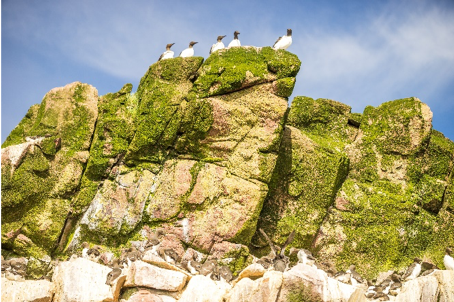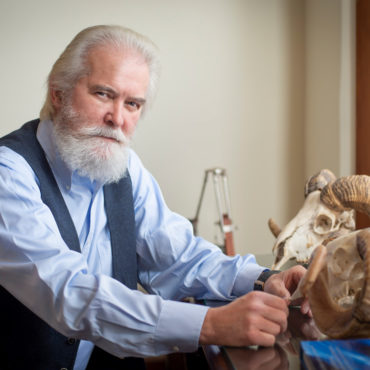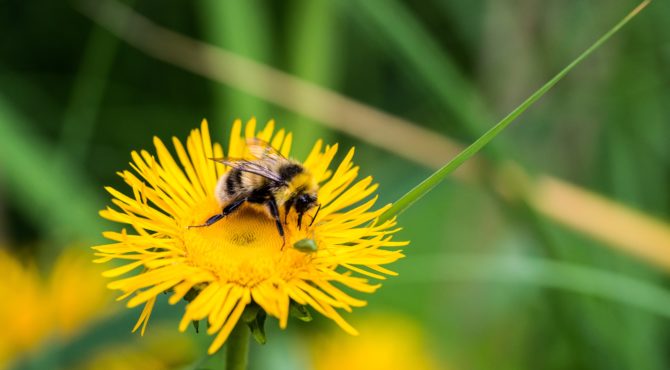A story from the shores of Newfoundland illustrates the crucial part that public discourse must play in the survival of hunting.
The hunting community needs to demonstrate its commitment to conservation and to do so by directly speaking to and engaging the general public. Understandably, there is much reluctance. However, if we fail to do this, we will become totally irrelevant and every career, business, and personal odyssey that identifies hunting as its wellspring will be the high price we will pay. The following story of an iconic North American bird illustrates the necessity of this move and the courage it will take to follow through.
The Island of Newfoundland stands resolutely separate from the North American continent – an ice-sculptured model of erratic coastline, formidable granite escarpments, and stone beaches worn smooth by a relentless sea. Inland, breathtaking expanses of barren land and a frenzied pattern of braided streams, fjord lakes, and innumerable ponds, gullies, and crystal-clear rivers divert the eye constantly.
Wildlife abounds on these landscapes – rock ptarmigans, arctic hare, black bear, moose, lynx, river otter, red fox, and the great-bodied and heavy-beamed woodland caribou.
Yet, this fullness is but a whisper compared with the writhing abundance of the offshore islands that millions of nesting seabirds call home. These small and numerous citadels lie like spawn around the coastline, ripe to bursting with eggs, chicks, and adults that cram every inch of sod, rock, and crevice from May through September. If one wishes to experience nature in all its intensity, indeed in all its creative force and ferocious hardship of gentle birth and callous death, then these small cathedrals are where you should worship. For these places, as wild and wind-torn as they are, provide an intensity of natural experience almost unsurpassable. Such experiences, duly witnessed and reflected upon, can lead us to insights regarding our role in the universe and how we can best achieve the perpetuation of those wild others we rightfully honor and cherish.

Common murres, known to Newfoundlanders as “turrs,” are duck-sized black-and-white seabirds that nest in huge, dense colonies on many of these offshore islands. Long a source of meat for coastal residents, these birds have been hunted for centuries and still abound within spitting distances of many communities, a testimony to the sustainable use approach to wildlife conservation that has so effectively secured the future for most species hunted under regulated, science-based programs. Turrs have several peculiar habits, among which is laying a single, fantastically colored egg on bare rock. They have completely forsaken all nest-building. This achievement is even more remarkable given that they occupy tiny ledges of rock, often no more than six or eight inches wide and often hundreds or even thousands of feet above the water, and are packed onto such ledges like a throng of small, tuxedo-suited men, growling, defecating, and jabbing with abandon. The noise and confusion on these ledges is almost unbelievable, as is the survival of the eggs that are incubated alternatively by the male and the female, which are identical in physical appearance.
Part of this remarkable survival is explained by the fact that turrs have evolved a very sharply pointed egg that tends to spin, rather than roll, when dislodged. Only this prevents a complete loss of eggs over the abyss and into the sea – this and the assiduous care of the adult birds. For the three or four weeks of egg laying and incubation, these ledges are alive with turrs crammed together, shoulders touching and single eggs held closely to their warm bellies. Night and day, through driving rain or snow and in warm sunshine and wild winds, these birds jealously protect the one chance they have at reproduction. Below them, often far below them, the ocean dances to the surge of wind and tide.
After about three weeks of care, the turr eggs hatch. The small black-and-white chicks that emerge have spiky down feathers, giving them the appearance of being shell-shocked. The big-footed youngsters represent a new challenge for the parent birds. These mobile bundles of energy live in constant peril of falling from the ledges, of being crushed by the throngs of adult birds, of drowning in fetid pools of water and guano, or of being killed by marauding gulls, ravens, and hawks. Furthermore, unlike many other seabird chicks which do nicely on regurgitated food, turr youngsters like their fish fresh, requiring the parents to forage at sea and often at long distances. Working in relays, one parent seeks dinner while the other protects and preens the growing youngster. Miraculously finding the specific and unmarked location on the ledge, the returning parent holds a single fish head-first down its throat with only the tail emerging from its bill. It will hold the fish there until the cartilaginous head has been digested and then will present it to the chick. The fish will then be swallowed whole and the chick will rest until awakened by insatiable hunger once more. This delightful existence is predicated on a predictable environment, one where baitfishes are abundant and close to the islands. As the baitfishes move off and the environment changes, new strategies are required.
After four weeks, the remarkable seagoing of the chicks takes place. In this species, the wings are used very effectively for swimming to considerable ocean depths in search of small fish, and thus their length and shape have been quite modified, along the lines of penguins but not as far. The small turrs that have now reached four weeks of age are a fantastic combination of body parts that reflect both their immediate survival needs on the ledge and those that will suddenly emerge once they have left its relative safety and ventured upon the open sea. Their great feet provide stability on the ledge and will help paddle and steer the chick in the water, while the short, stubby wings will be fine for swimming and pursuing fish. However, and this is surely the most incredible part of their young lives, they have not yet attained the power of flight when the time comes to leave the small ledge where, up until now, their entire lives have been spent.
It will be late evening when they decide to depart. Maybe a thousand feet below them, ocean surges will be crashing the fragmented rock skirts of their island and gulls will be soaring, raucously calling, and waiting for things to turn in their favor. In the fading light of day, often in fog or heavy drizzle, the chicks, which until this time, have hugged their rock face with such determination, will suddenly move and calling and bowing incessantly, will approach its edge. They will hear their parents calling, swimming back and forth in the gray-and-white surges below, throwing their heads back over their shoulders and exposing the neon yellow-orange palettes to guide the chicks onward. The ledges will come alive with noise and aggression. The small landlubbers are about to become seafarers, all at once, from off the rock and into the turbulent air. They will extend their large feet like parachutes and beat their tiny wings like mad, breaking their fall into the great ocean below.
Many will die, of course, beaten senseless on the rocks, crushed by their first ocean surge or eaten by predatory gulls. But most will survive, bobbing to the surface and swimming outward into the gathering darkness, to a new existence, accompanied by one parent and the certainty that inevitable change has occurred. Creatures that have only known land will not touch it again for at least four years. But when they do return, they will be part of yet another transition, taking their places as egg layers and providers so that turrs may always gather along the coasts of Newfoundland, making all of our lives so much richer in turn. For all this to occur, one great leap of faith will remain forever the essential odyssey. No matter how long the chicks might persist in the comfort of their ledge existence, there is no future for them unless they leave it behind.
Hunting is one of the few great departures from an otherwise predictable and suffocating world. It is in the possibility of the animal’s death that we come to treasure the absolute necessity of their future lives. That complexity will forever ensure that opposition to hunting will always be with us. We know we are in decline and that we must do something more than we are doing in order to keep hunting alive. All else is lies and self-deception.
Our safe ledges, from which we look down on the uncertainty of public discourse, can keep us for only a little longer. Social, economic, and ecological realities leave us absolutely no choice. We either convince our fellow citizens of hunting’s modern relevance and value, or we will perish in our high cathedrals, left to die in a changing environment that could be conquered only by confidence in ourselves and a great leap of faith.






